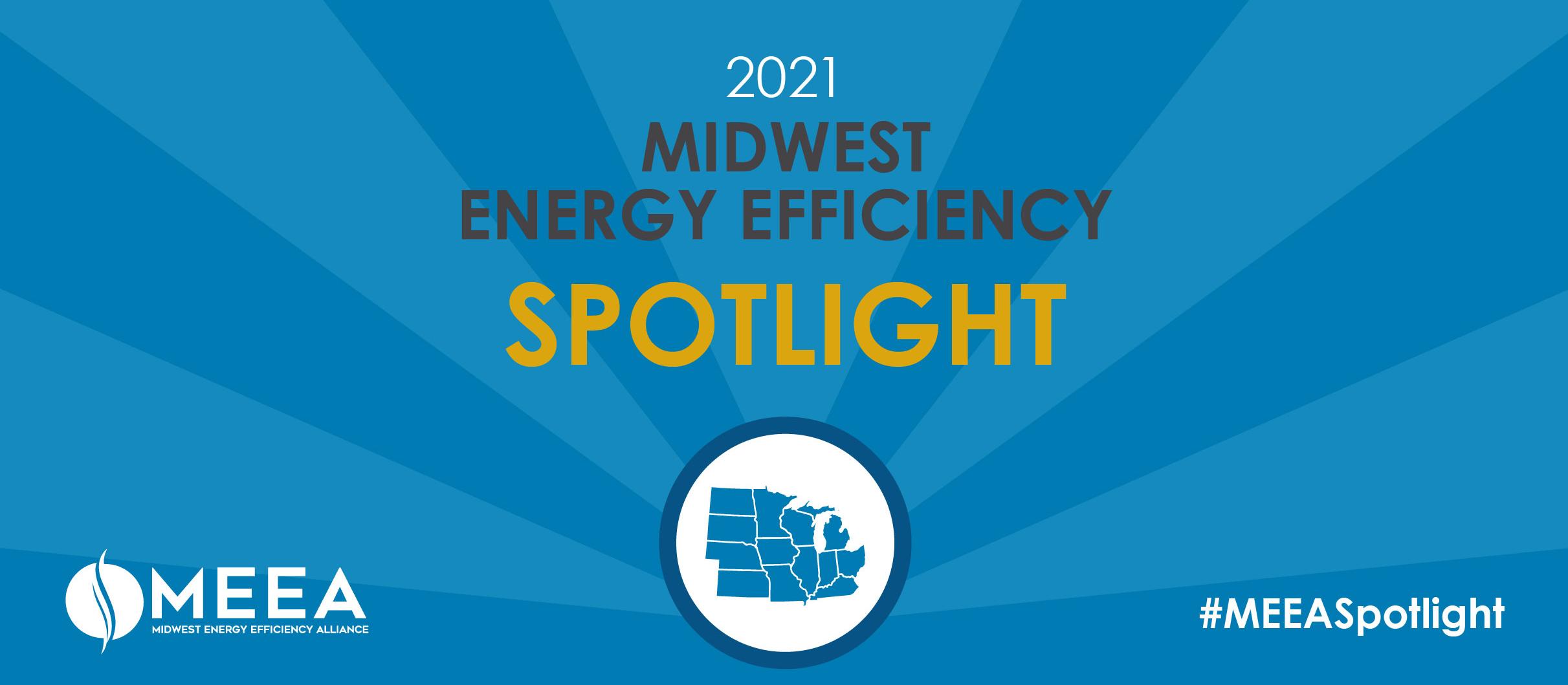
MEEA is excited to present the 2021 Midwest Energy Efficiency Spotlight, which showcases the impact energy efficiency (EE) policies and programs have had for Midwestern residents and businesses. The metrics we highlight depict the Midwest EE industry’s numerous benefits across the region. The following facts and figures cast a spotlight on how the EE industry creates prosperous and resilient local, state and regional economies while driving energy savings to meet current and future energy demand.
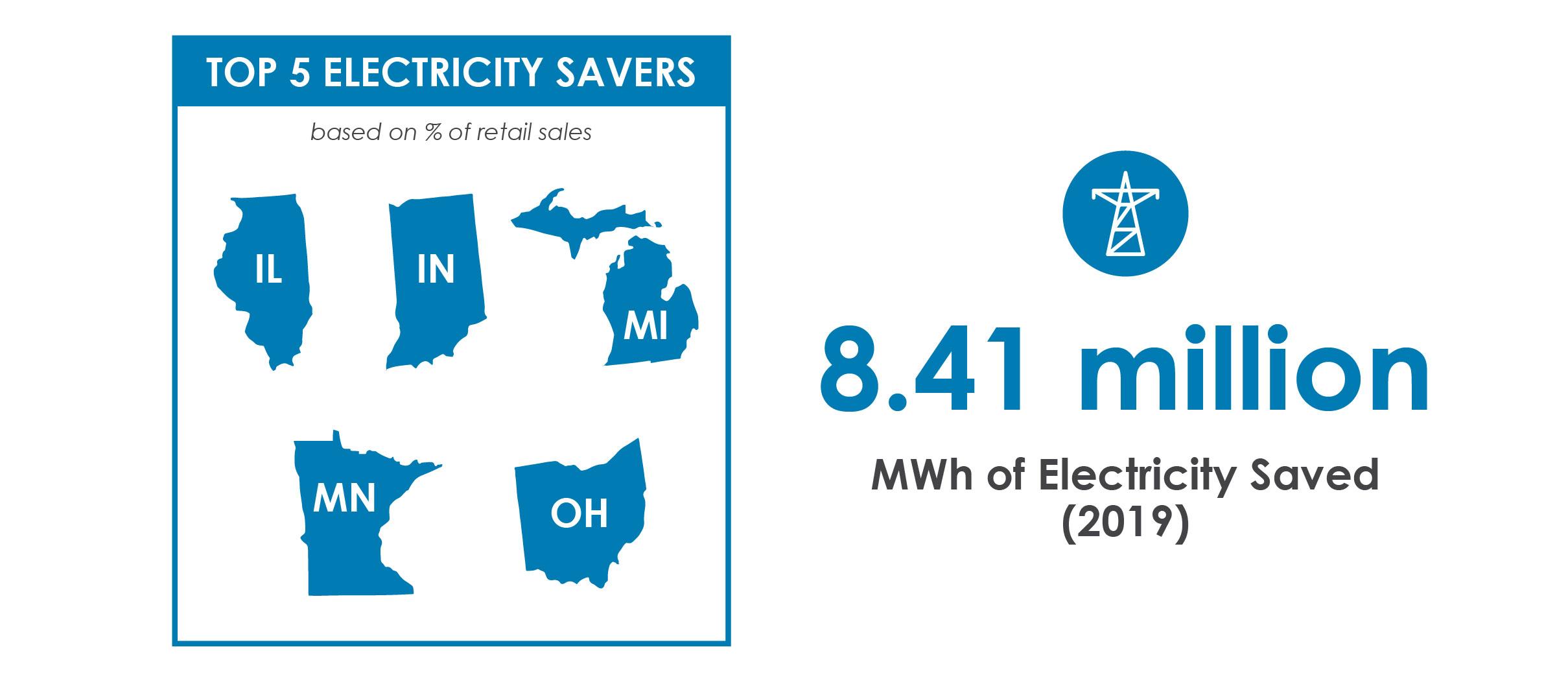
The Midwest saved 8.41 million MWh in 2019. The top five states are regional leaders in electricity savings, responsible for 84% of the region’s 2019 total.
In 2021, utilities in our 13 states will collectively invest $1.36 billion dollars in EE to save electricity. Electric EE investment in the Midwest has increased by 50% over the past decade and is almost 13 times what it was at the turn of the millennium. This investment signals a regional commitment to electricity savings, and demonstrates that utilities, policymakers, regulators and stakeholders recognize EE as a necessary resource to meet electricity demand cost-effectively.
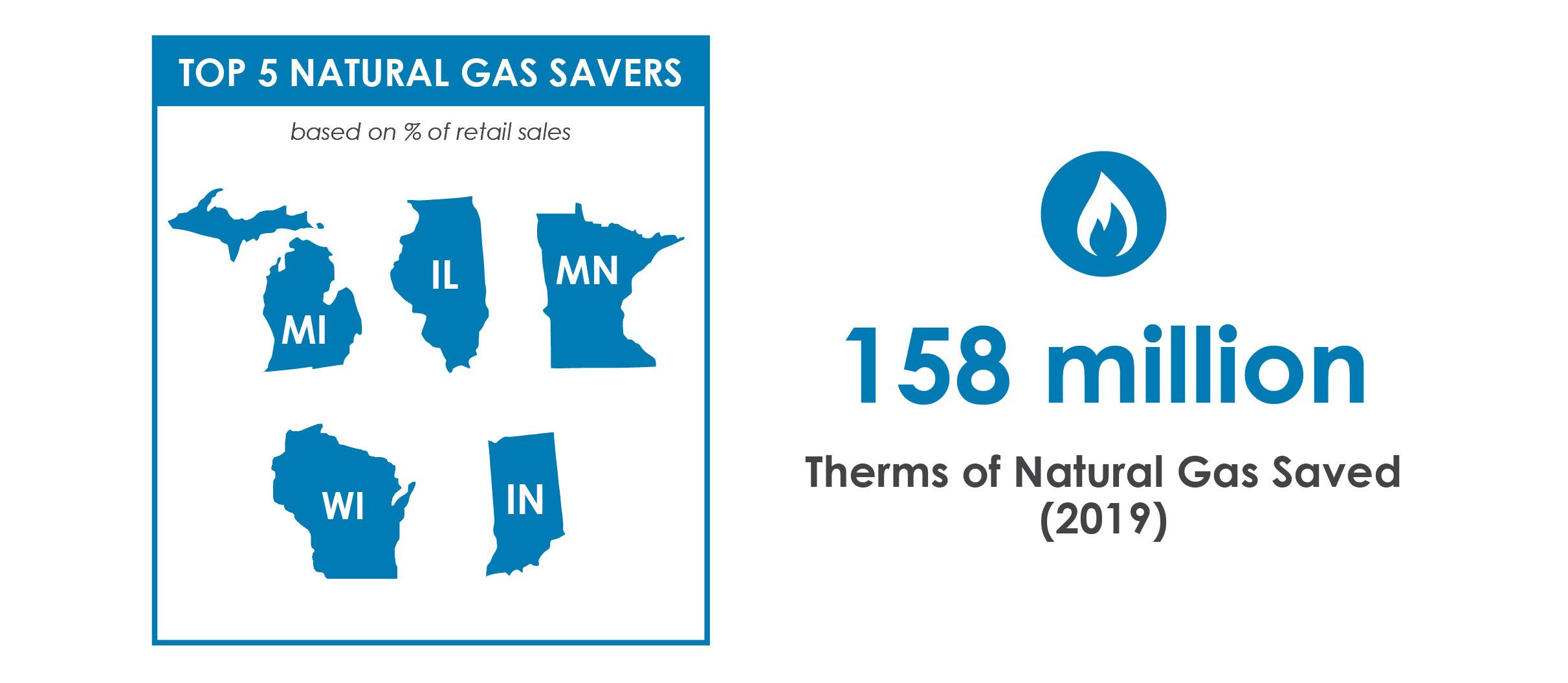
The Midwest saved 158 million therms in 2019. The top five states represent 99% of the region’s reported annual natural gas energy savings. Natural gas EE data can be hard to find – savings and spending reporting is better in states with gas EE resource standards than in states where gas EE is voluntary. There is no federal EIA gas EE reporting at all. The data issues make it harder to be accurate with gas EE than it is with electricity. Enhancing and standardizing natural gas EE reporting would increase our understanding of this resource.
From the available data, we estimate that in 2021, utilities in our 13 states will collectively invest about $355 million dollars in natural gas EE. Gas EE investment in the Midwest has increased by only about 3% over the past decade but is 46 times what it was at the turn of the millennium. The growth of gas EE may have plateaued in the region because of the high supply and low fuel prices, but EE remains a valuable resource for Midwestern natural gas utilities.
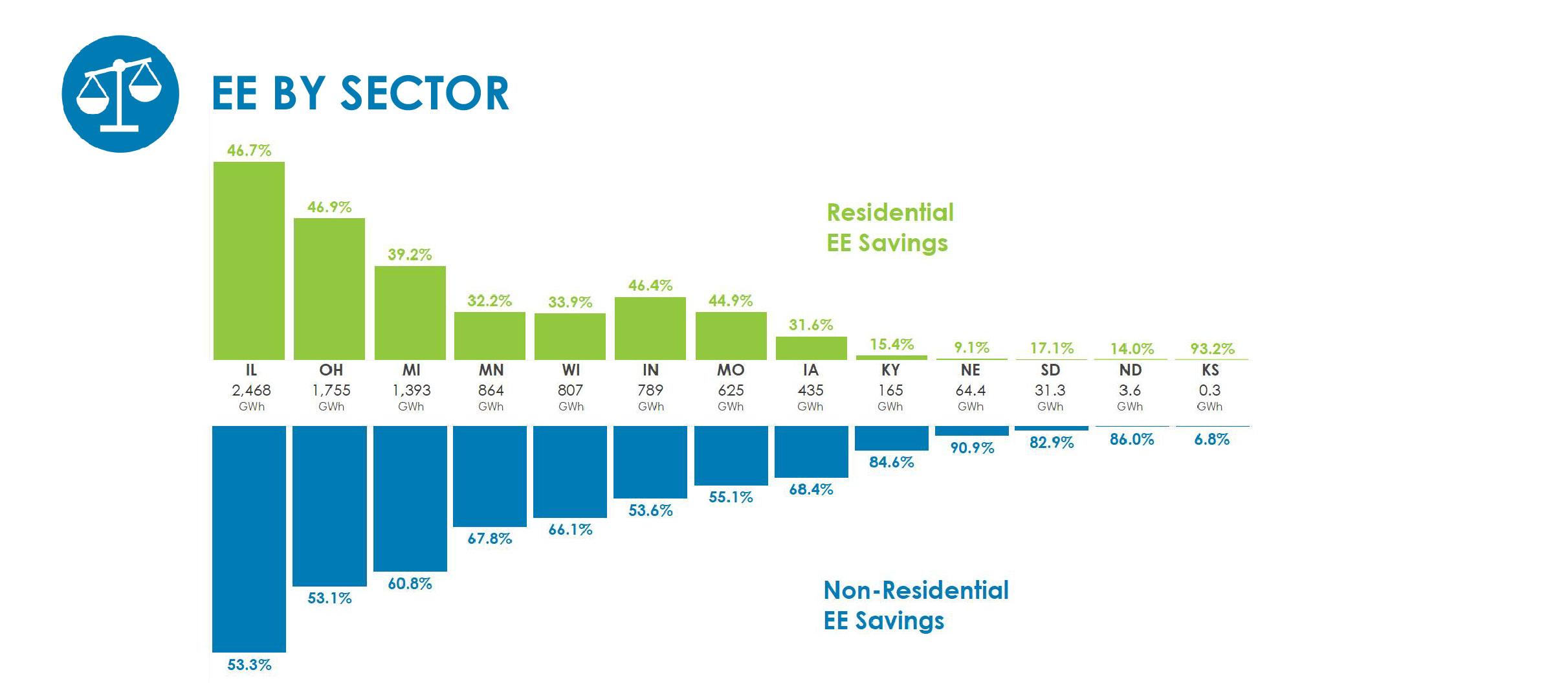
Ideally, the distribution of energy efficiency spending by sector is proportional to the recovery of EE charges on that sector’s energy bills. Savings, however, are not always directly proportional to funding since some programs provide more cost-effective savings than others. State policy focus can also influence how aggressively savings are pursued within each customer segment.
This graph shows the distribution of electricity savings, as reported to the federal Energy Information Administration. In general, Midwest states get more of their total savings from their non-residential programs, 59% of the total reported savings region-wide. In the states that skew heavily away from that trend, the lack of a statewide, comprehensive energy efficiency policy leads to smaller budgets, restricted programming and impacts that focus more on one customer sector.
The issue of energy affordability was at the forefront in 2020, as households hit hardest by the economic crisis struggled with utility bills amidst losses of jobs and income. MEEA believes that energy efficiency is a key short- and long-term solution to addressing energy affordability and security.
These maps identify Midwest states that have policies requiring utility energy efficiency programs for low-income households and those with minimum spending requirements. They also show states where some or all the utilities are collaborating on joint programs, and where utilities are working in conjunction with state weatherization providers to leverage funding and increase impacts.
Nonetheless, the devil is in the details – to truly reduce the burden of energy bills and other expenses for under-resourced households, we can improve program design and delivery, tailor promotion and outreach, grow community partnerships and utility coordination, and rethink how we measure success in these programs. The policies and practices noted on this slide are ways that Midwest states are starting to take a deeper look at these issues.
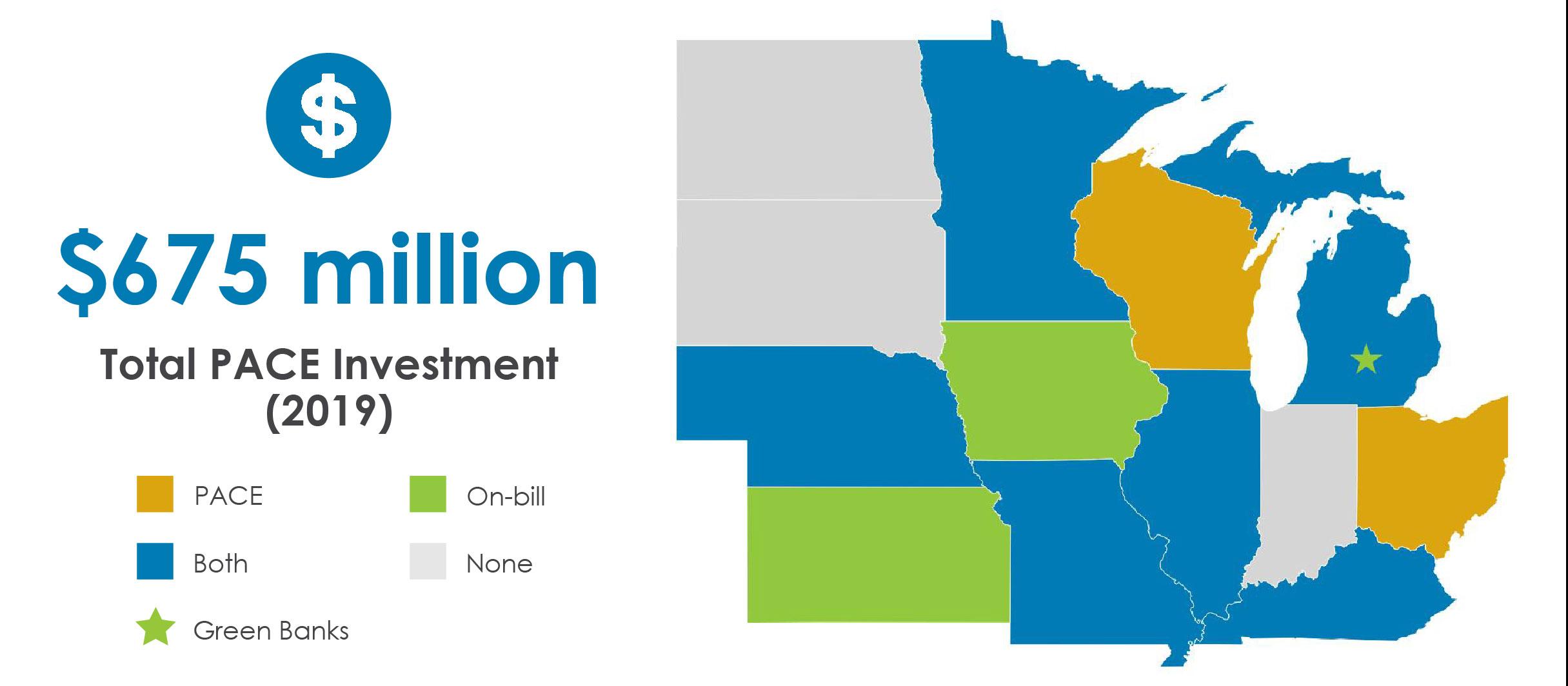
For some customers, the upfront cost of energy efficiency upgrades is a barrier to energy savings. Financing mechanisms can increase a utility customer’s access to energy efficiency. Property Assessed Clean Energy (PACE) and On-Bill Financing are two financing tools used by Midwestern states to expand the adoption of energy efficiency upgrades. Green banks are dedicated finance institutions that use finance mechanisms, such as PACE and revolving loan funds, to connect clean energy, resilience and climate-related projects with capital. PACE administrators offer loans to customers which cover all upfront costs of EE measures. The loan is paid through a special assessment on the property’s tax bill. The On-Bill model allows customers to pay for energy efficiency measures over time using a portion of bill savings from those measures.
On-Bill is allowed in eight Midwestern states; PACE is also allowed in eight states. PACE financing in the Midwest more than tripled between 2018 and 2019, to $675 million. The region’s only green bank, Michigan Saves, financed about $60 million in energy improvements in 2019. Nationwide, about 29% of green bank financing is for EE projects.
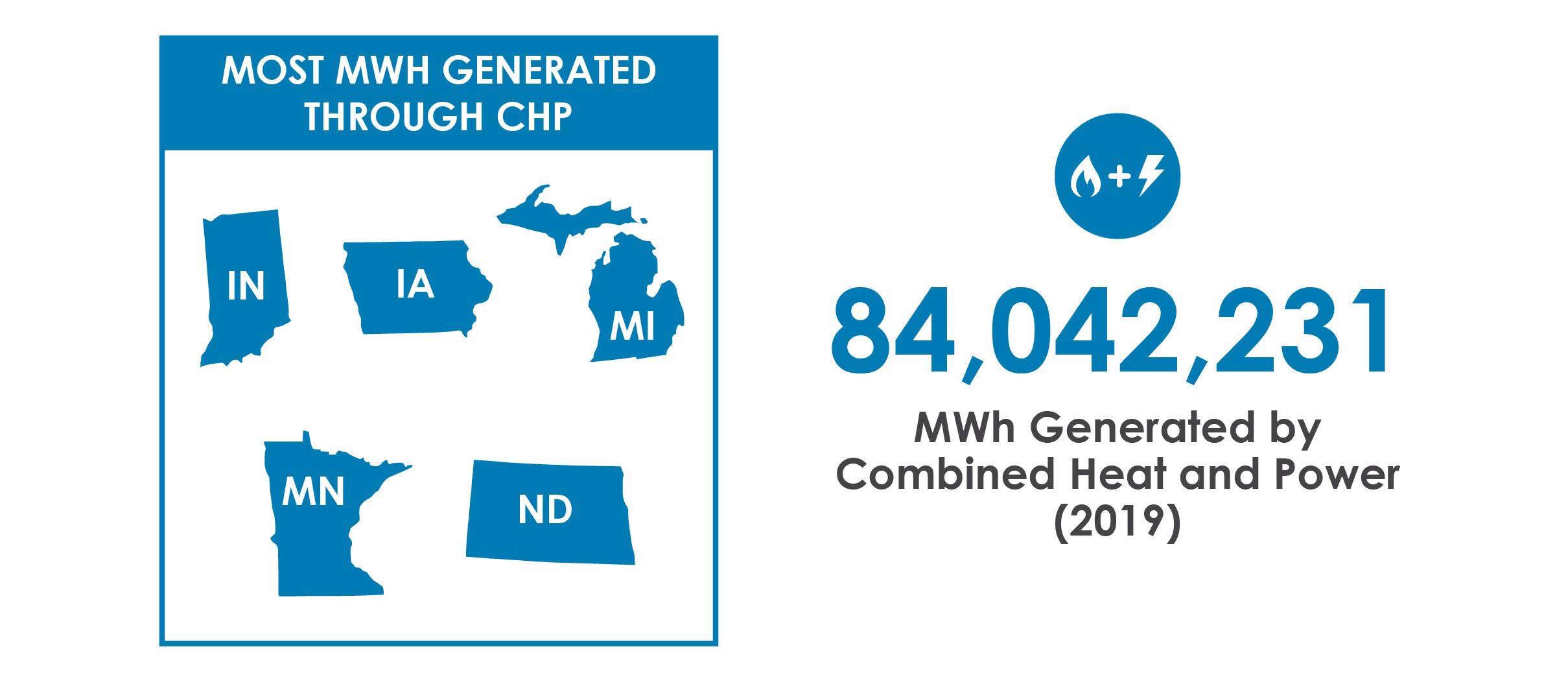
Combined heat and power, or CHP, systems recover heat that would otherwise be lost in power generation or industrial processes. That heat can be used to generate electricity or provide heating and cooling without needing an additional fuel source. CHP can be over 40% more efficient than traditional generation and is more cost-effective than providing heat and electricity separately. In some states, utilities can count CHP toward energy efficiency goals.
Manufacturing, institutional facilities and commercial buildings use CHP to improve the reliability and resiliency of their operations. Utility programs, financing mechanisms like PACE, interconnection standards and standby rates are key factors that support the deployment of CHP.
According to federal electricity generation data, CHP generation provided 84.04 million MWh of electricity in our region in 2019, down 6% from the previous year.
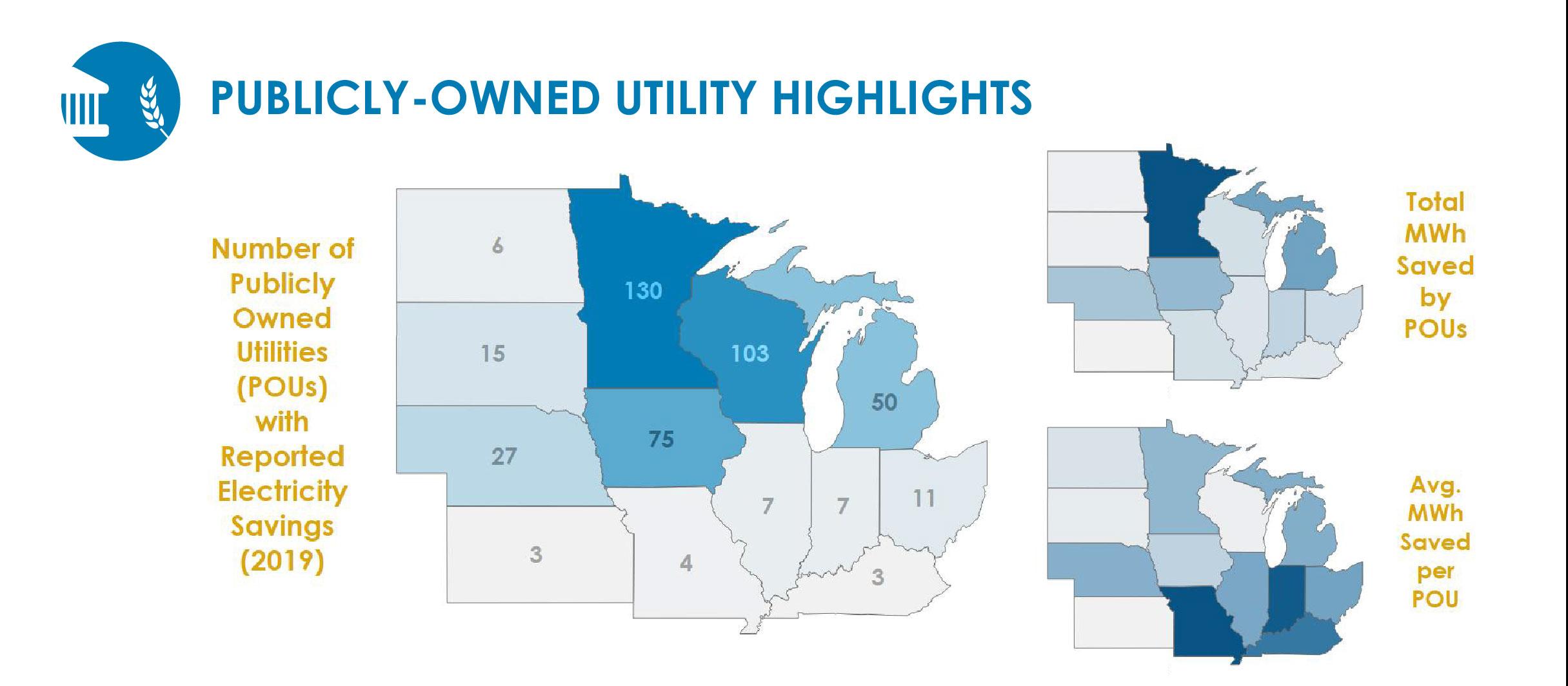
A quarter of the Midwest’s electric customers live in small towns and cities and rural areas that are served by publicly-owned utilities or POUs, a term that includes municipal and co-op utilities, public power districts and state or federally-owned utilities. Though the policies for POU energy efficiency in the Midwest vary from state to state, many of these utilities run strong energy efficiency programs. We identified 360 Midwestern POUs with reported energy efficiency savings in 2019.
Minnesota, Wisconsin and Iowa have the largest number of POUs providing energy efficiency programs to their customers, because of the large number of POUs in those states and their long history of offering EE programs. Most, but not all, WI POUs are members of the statewide Focus on Energy program administrator. Minnesota POUs saved a total of 273 GWh of electricity in 2019, the most of any state in the region. Missouri, Indiana and Kentucky POUs had the highest average savings per POU, because a small number of POUs were responsible for the bulk of the electricity savings in the state.
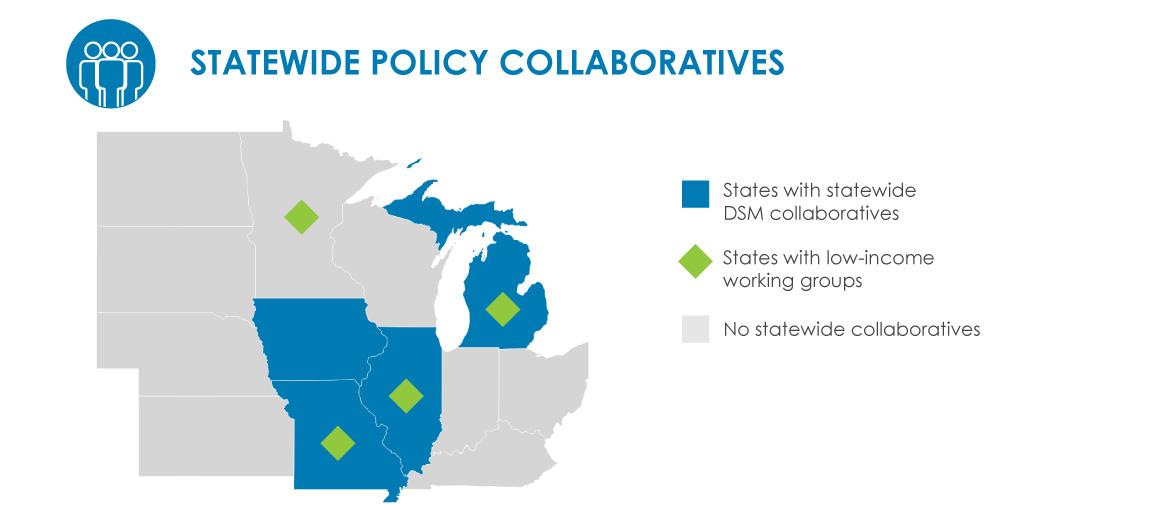
Policies designed to drive energy savings vary across the Midwest. Some states use mandatory savings requirements while others utilize long range planning processes. Regardless of the directives to utilities, it is apparent that an active statewide policy collaborative can foster transparency and improve program design. Stakeholder collaboratives can bring together utilities, implementers, evaluators, regulatory staff, consumer advocates, community leaders and other interested parties. Collaboratives facilitate information sharing and consensus-building, which may reduce the number of contested issues in regulatory commission proceedings.
Illinois has a long-running statewide collaborative with a website that facilitates public participation. The collaborative has working groups on market transformation program design and the measurement of non-energy impacts.
Both Illinois’ and Michigan’s collaboratives hold monthly meetings that allow for continued dialogue and regular updating of EE program resources. The Missouri PSC staff convene quarterly collaborative meetings with agendas jointly developed by stakeholders. Iowa’s utilities convene an annual collaborative meeting to address stakeholders’ questions on program reports, while individual utilities may convene quarterly working groups on program design.
Four states, Illinois, Michigan, Minnesota and Missouri, have working groups that aim to improve the design and delivery of programs for low-income customers. The groups vary in structure but present an opportunity for increased collaboration across the energy, health and housing sectors. This collaboration can address issues of energy affordability, healthy housing and racial disparities. They present opportunities for utilities and program administrators to receive guidance from the under-resourced communities that these programs are being designed for.
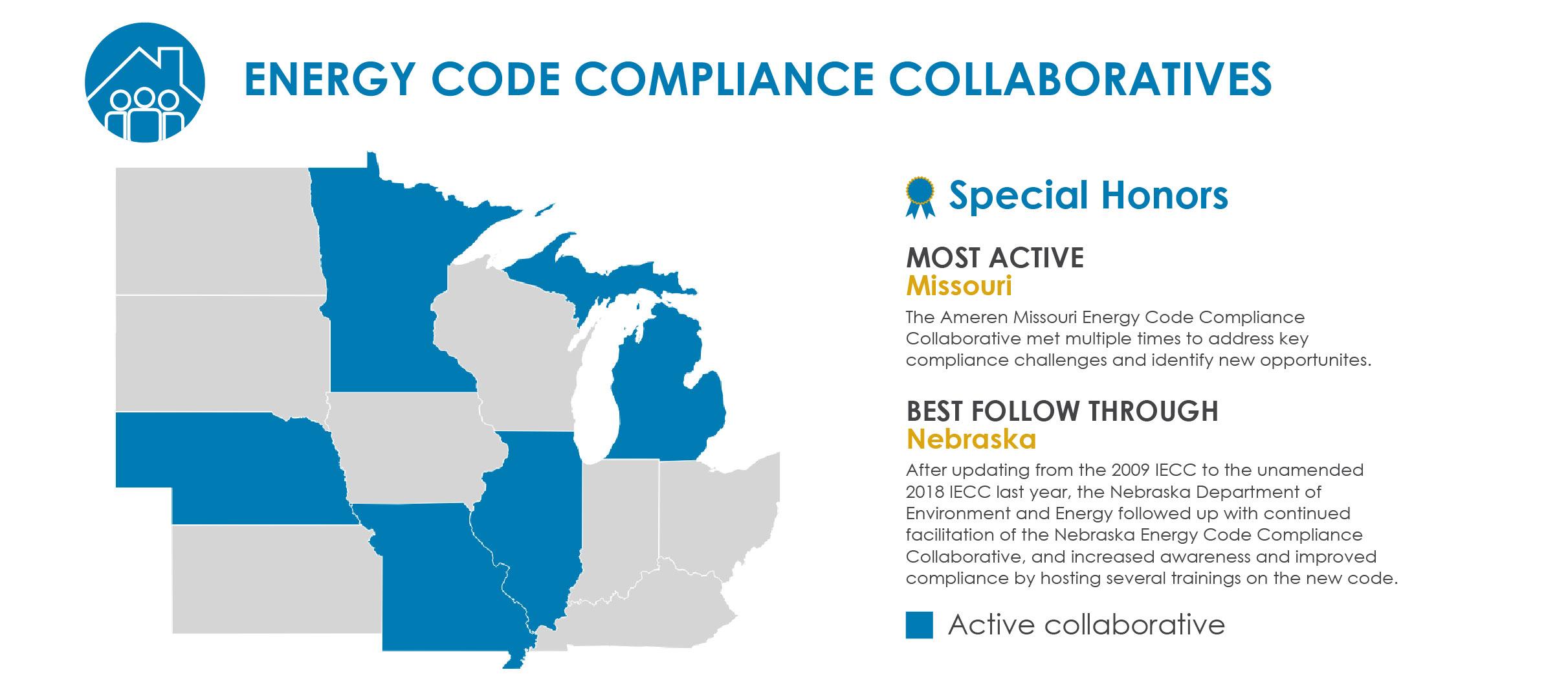
Statewide collaboratives are also valuable in the building energy codes sector. Collaboratives that focus specifically on addressing barriers to building energy code compliance are gaining traction in the Midwest.
In 2020 a few state collaboratives met to discuss code compliance, program updates and COVID-19’s impacts on each of the states.
Missouri stood out with the Ameren Missouri Energy Code Compliance Collaborative meeting multiple times to address key compliance challenges and to identify opportunities to increase compliance in their territory.
Nebraska updated their code last year to the unamended 2018 IECC. The Department of Environment and Energy followed up with continued facilitation of the Nebraska Energy Code Compliance Collaborative and held trainings on the new code to improve compliance.
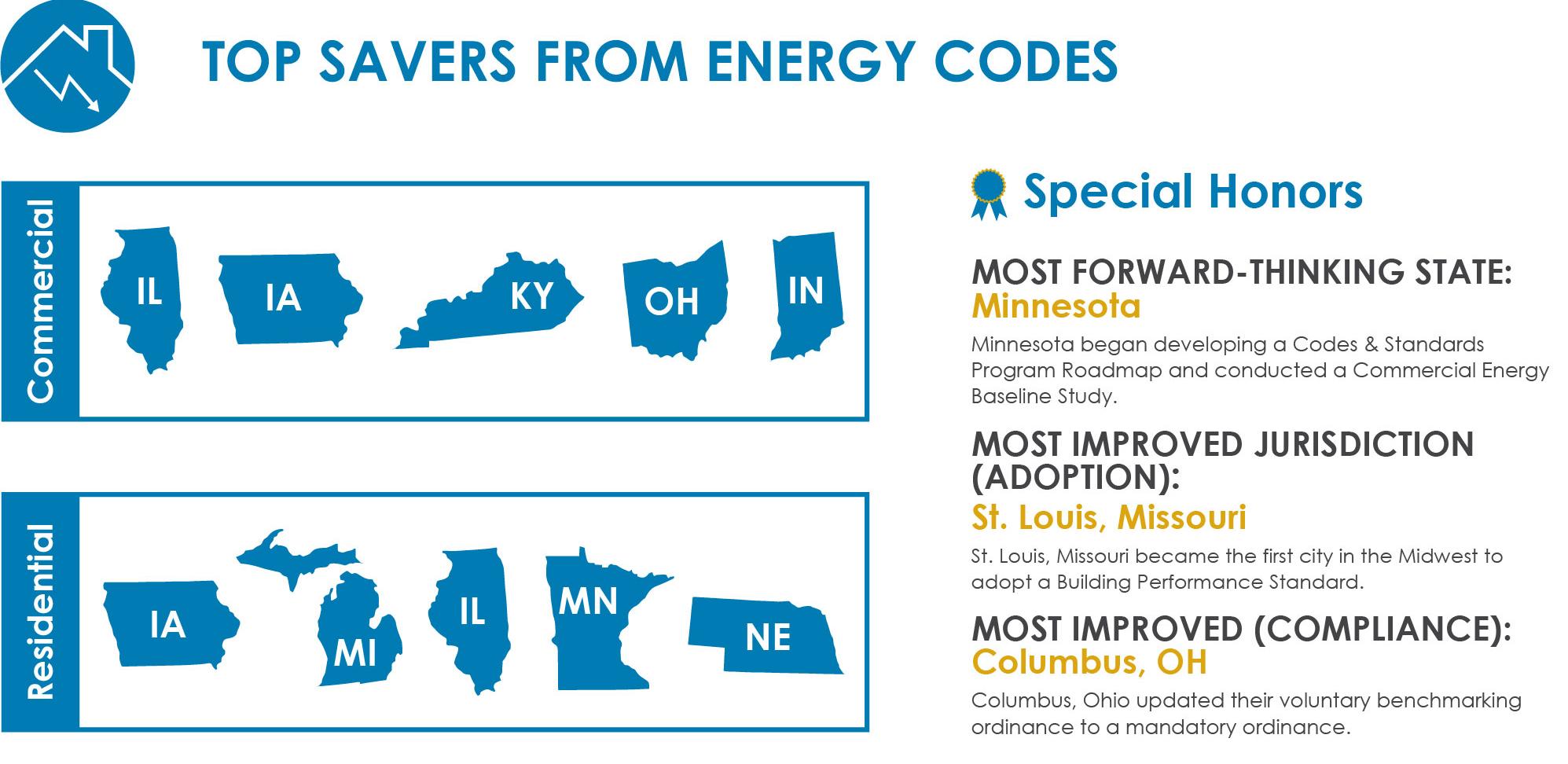
Regular adoption of building codes and improved compliance with existing codes is critical to ensuring new commercial and residential buildings are energy efficient.
Minnesota’s Department of Commerce began developing a Codes & Standards (C&S) Program Roadmap, in partnership with 2050 Partners, Slipstream, MEEA and LHB. This project establishes a foundation for robust programs to deliver cost-effective energy savings that can be claimed toward utility savings and carbon reduction goals. Minnesota also conducted a Commercial Energy Baseline Study which sought to identify the future energy savings opportunities for commercial buildings.
St. Louis, Missouri became the first city in the Midwest, and only the fourth jurisdiction in the country, to adopt a Building Performance Standard, which builds on the existing benchmarking ordinance passed in 2017. By passing the standard, St. Louis is taking a major step toward significant carbon reductions and energy efficiency improvements in its existing building stock.
Columbus, Ohio updated its voluntary benchmarking ordinance to a mandatory ordinance, which requires building owners to report building size, energy usage and utility bill data beginning in June 2021. If it follows the pattern of similar mandatory ordinances, this ordinance will result in a 3-4% reduction of annual carbon emissions.
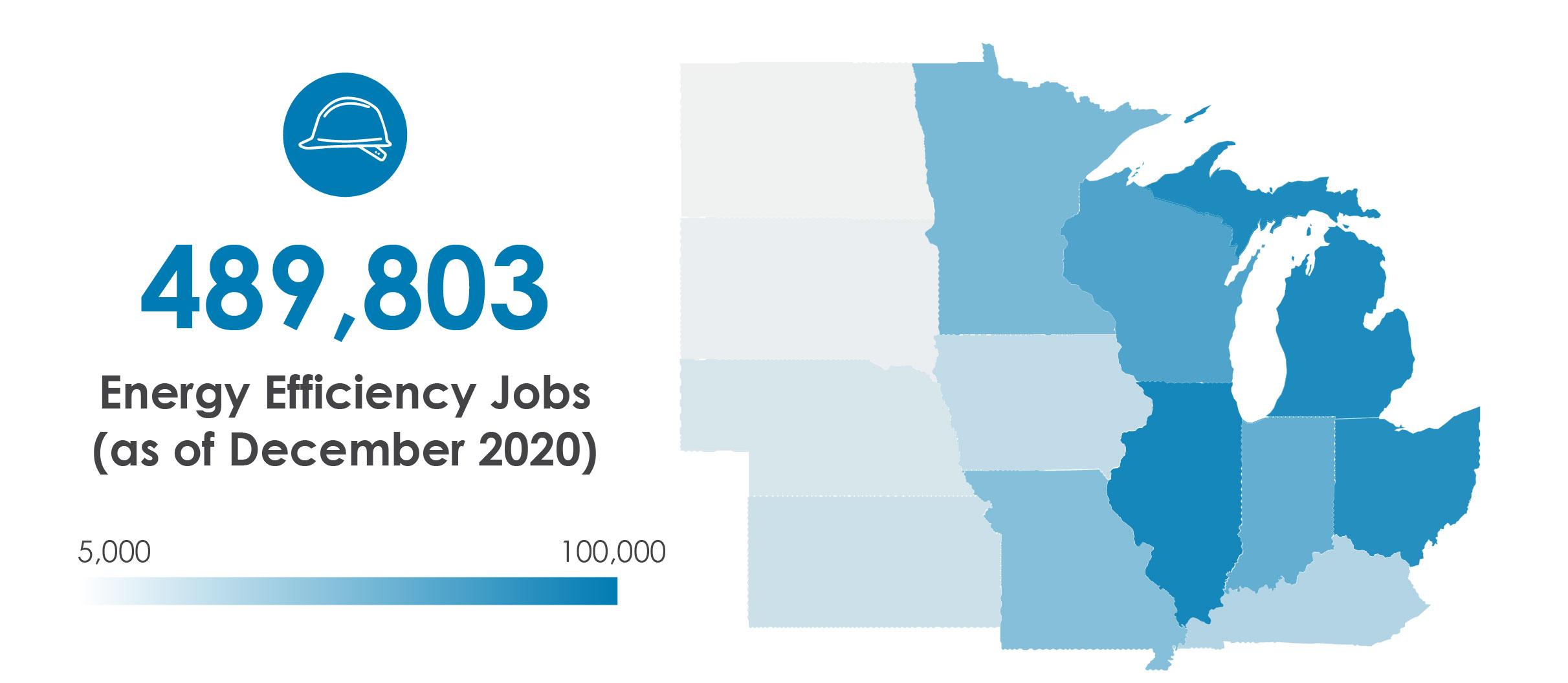
As with the rest of the economy, energy efficiency took a hit in 2020. Energy efficiency in the Midwest lost 100,486 jobs by May 2020 due to the COVID-19 pandemic and gained back only 28,436 by the end of 2020, for a net loss of 72,050 jobs. The Midwest’s EE workforce was 489,803 strong at the end of 2020. This map shows where these jobs are located across the region.
EE jobs are not limited to any workforce sector. They include professional and service jobs, the building trades and industrial labor. Employment is driven by installation, financing, program evaluation, manufacturing, advocacy and engineering of energy efficiency goods and services, among others.
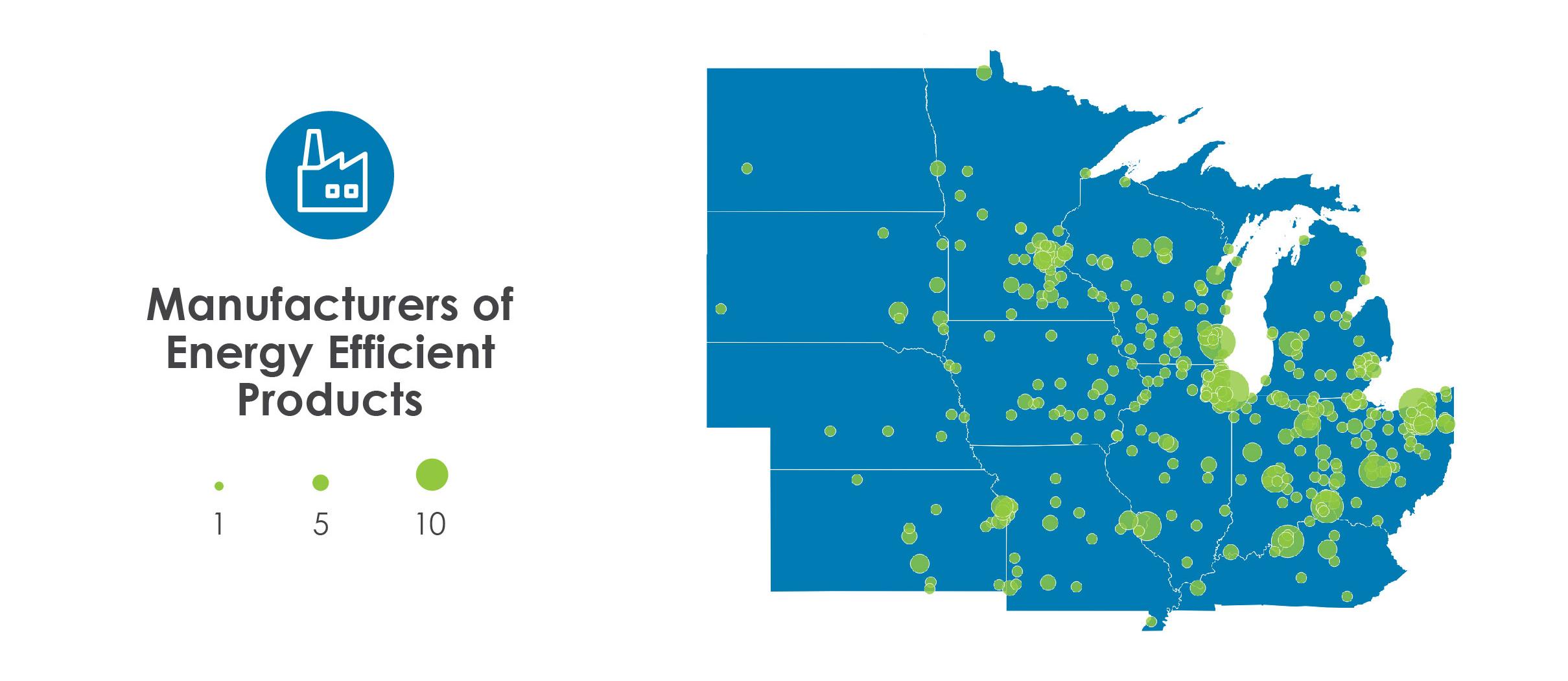
Energy efficiency is proudly made in the Midwest. The Midwest’s efficient product manufacturing includes building materials and equipment, appliances, lighting, fans, industrial equipment, sensors and controls and more. Many of these manufacturers are ENERGY STAR Partners, producing products that are certified to be efficient by the US EPA & DOE.
We have identified nearly 630 manufacturing locations and company headquarters for energy efficient products manufacturers as well as company headquarters across the region. Points on the map represent facilities associated with more than 415 companies and brands.
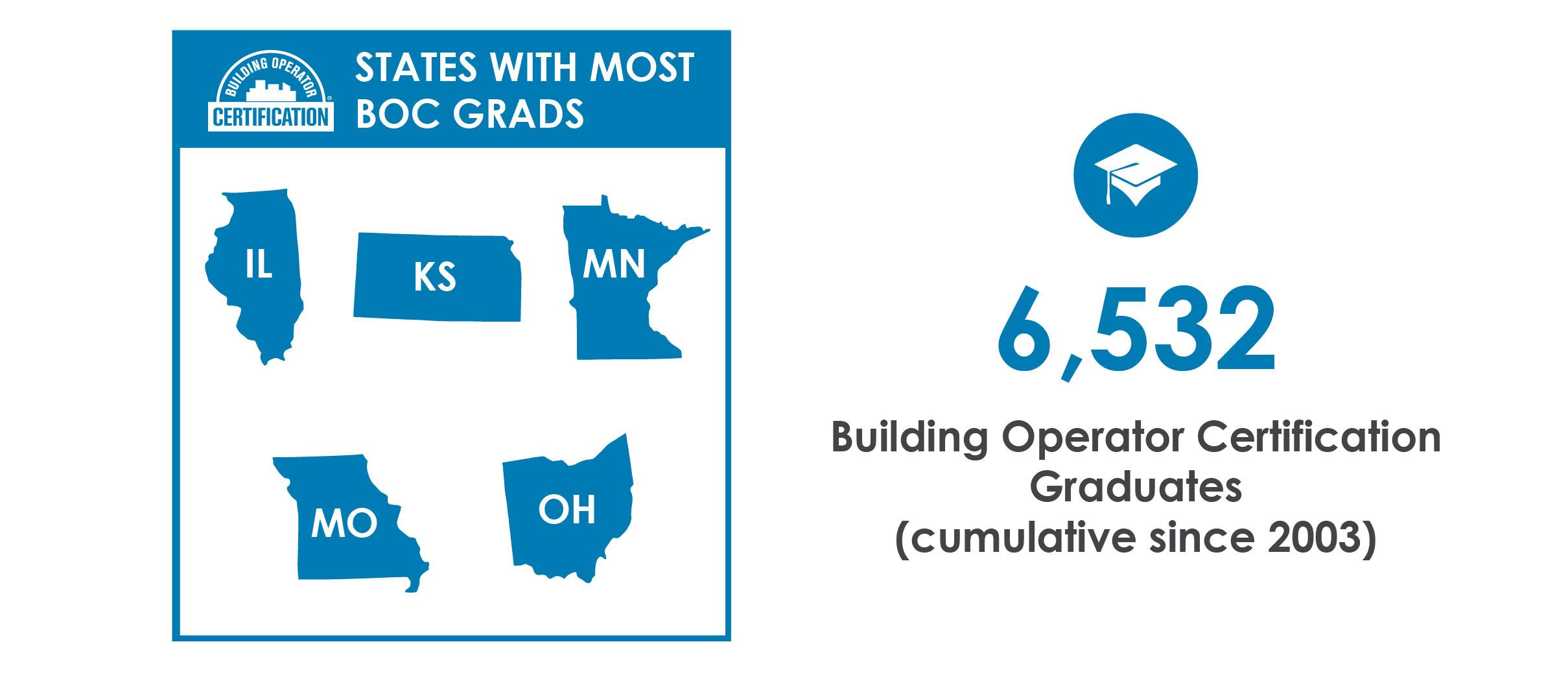
The Building Operator Certification® (BOC) program drives operational efficiency and creates economic opportunities for operators of facilities in the commercial and industrial sectors. The BOC program achieves measurable energy savings by training maintenance technicians and individuals directly responsible for day-to-day building operations. BOC graduates use the tools learned in training to help their facilities save energy, reduce costs and improve the efficiency of their building systems.
Fundamentally, BOC is a job training and workforce development program that adds skillsets to increase building operators’ value in the job market. According to MEEA’s 2019 graduate survey, 93% of individuals have implemented an energy efficiency project at their facility since taking BOC, 95% would recommend BOC to a colleague or friend and 59% reported some level of career advancement after completing BOC, such as a promotion or a raise. MEEA began running this program in 2003, helping 6,532 building operators achieve certification along the way. COVID-19 did not derail the program, as MEEA was able to quickly adapt by offering the trainings online.
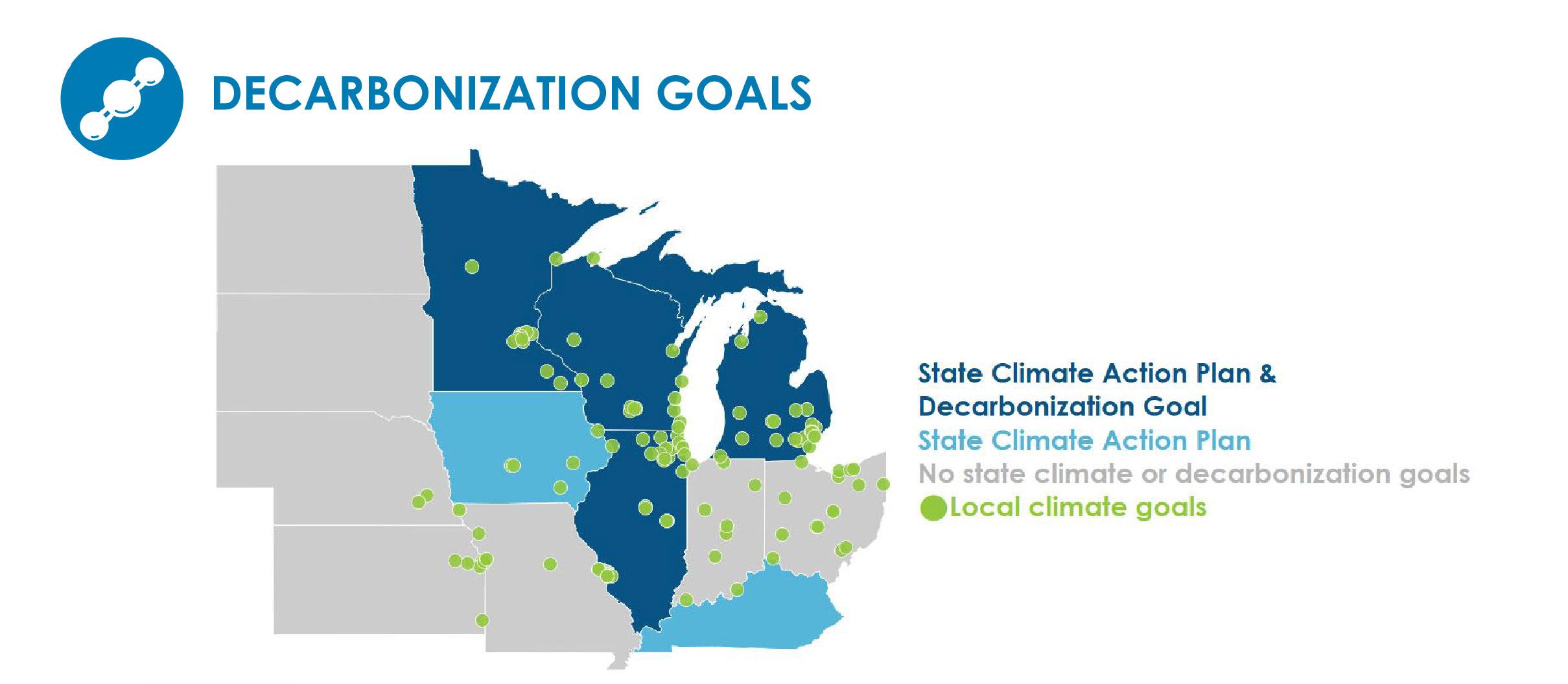
To address climate change, policy leadership is important. State climate action plans with specific decarbonization goals can chart a path for legislatures, regulators, utilities and stakeholders. Six Midwest states have developed climate action plans in the last decade or so, and as the threat of climate change grows, some of those plans are being refreshed. Updated or new climate action plans are underway in Michigan, Minnesota and Wisconsin. A few states have pledged through executive directive or order to meet the Paris Climate Accord decarbonization targets which range from a 26-28% reduction of emissions from 2005 levels by 2025. Only Minnesota has codified its carbon emissions reduction goal via its Next Generation Act of 2007, which requires the state to reduce 80% of emissions from 2005 levels by 2050.
In municipalities throughout the Midwest, even in states without climate plans, mayors and other policymakers have made local goals and commitments to clean energy and decarbonization. These commitments demonstrate the values of their constituents and help to signal those values to the state and the utilities that serve their cities. Decarbonization goals are gaining momentum at the city level throughout the region. In 2020, MEEA looked at 15 Midwest city climate plans with energy efficiency components and identified those with innovative strategies.
This map shows 119 cities in the Midwest with municipal climate and decarbonization goals. It draws on several leading sources to identify municipal goals, but probably does not capture every municipality with a climate action plan or decarbonization goal, depending on when goals were adopted and the lists last compiled.
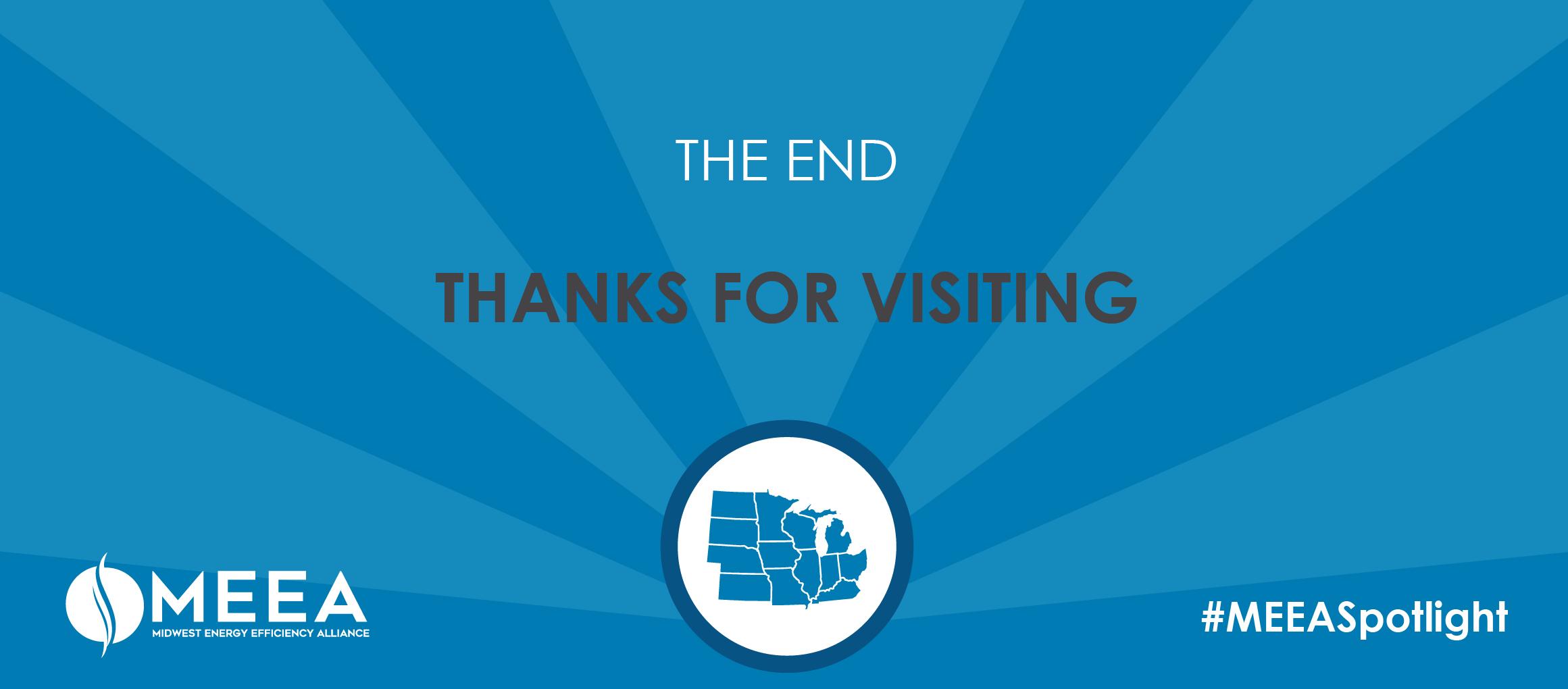
The Spotlight highlights the numerous energy efficiency success stories across our region, but these successes have not come easily. Consider that the Midwest contains the bulk of the nation’s industrial sector, communities with economies reliant on fossil fuel generation, states with primarily low-cost electricity and natural gas and regions of extreme climates and significant seasonal weather shifts.
It’s apparent that the EE industry spans nearly every locality in the region. The benefits of EE profoundly impact our built environment and economy. Energy efficiency is a local resource that draws broad support from red and blue states, all income levels and rural and urban areas alike. MEEA will continue to shine a spotlight on the success of EE in our region.
Download a copy of the 2021 Spotlight. Download the 2021 Spotlight Data Notes.